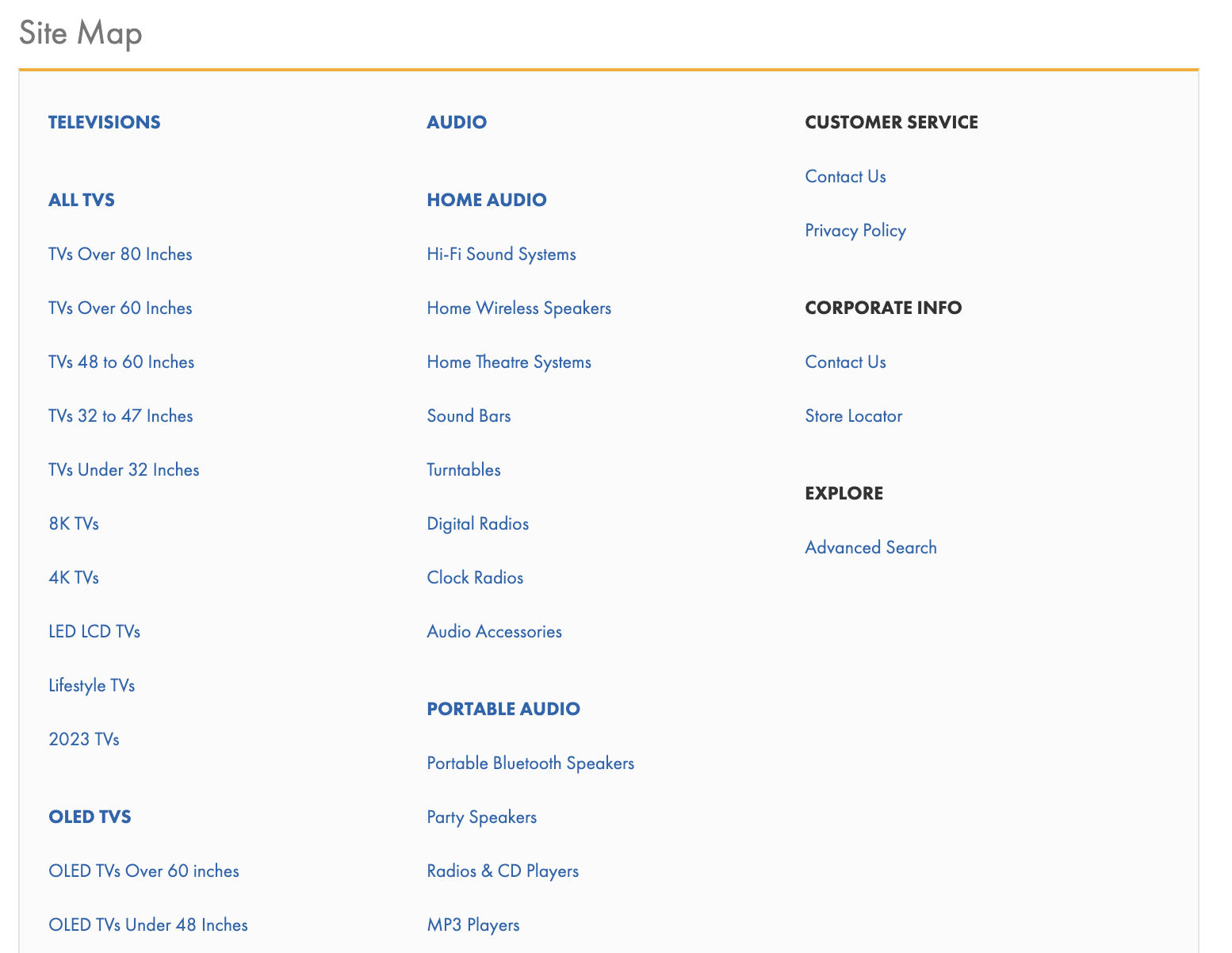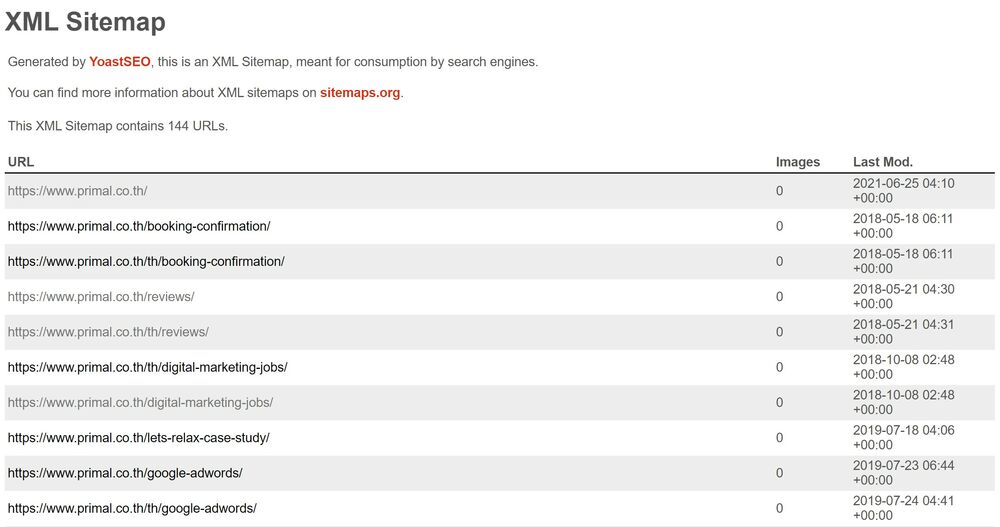Unlocking the Secrets of Sitemaps for Enhanced SEO
In the ever-evolving landscape of search engine optimisation, understanding the intricate web of your site’s structure plays a pivotal role. Herein lies the power of sitemaps, which offer clarity to search engines and your website users. At Primal Digital Agency, a leading seo agency in Thailand, we have witnessed firsthand how a well-structured sitemap can make a difference.
In this post, we will discuss what sitemaps are, the difference between the most common types of sitemaps, and the role of a sitemap generator. We will also share valuable tips on how to choose the right sitemap generator for your site and how to create effective sitemaps to ensure improved SEO of your website.

Table of Contents
What is a Sitemap?
In simple terms, a sitemap is a blueprint. It provides a clear layout of your website’s pages, aiding search engines like Google in understanding your content and its importance. Think of it as a roadmap, guiding search engines to the most crucial parts of your website. Typically, sitemaps are used by the webmaster to inform search engines about website URLs available for web crawling.
What are the Types of Sitemaps?
While the term ‘sitemap’ may sound singular, there is more than one type to be aware of. In this article, we will explain the two main types of sitemaps:
HTML Sitemap
An HTML sitemap is a visual sitemap designed for human users. It is the user-friendly member of the sitemap family. An HTML sitemap is a visual representation primarily designed for your website visitors. It aids in navigation, ensuring that users find the information they are seeking without hassle.
HTML Sitemap Example:

XML Sitemap
An XML sitemap is a machine-readable sitemap primarily used by search engines. XML sitemaps are geared towards search engines, providing a machine-readable layout of your site’s structure. The sitemap will enable search engines to crawl your site’s content efficiently.
If you are keen on diving deeper into the world of SEO, our comprehensive guide, What is SEO?, can offer more insights.
XML Sitemap Example:

Benefits of Using a Sitemap
Sitemaps are key to a solid foundation to website development and maintenance. Here are the main advantages of having a sitemap:
Improved Search Engine Visibility
Search engines can index and rank your pages more effectively, ensuring search engines discover all the important pages.
Elevated User Experience
With the streamlined navigation of a sitemap, users can find what they need easily and quickly. This will help improve bounce rates on the site.
Efficient Monitoring and Tracking
Stay updated with website changes and ensure search engines recognise all the updates.
Support for Complex Websites
Large or intricate sites can benefit immensely from clear and organised sitemaps, ensuring every page is included.
Who Should Use a Sitemap Generator?
A sitemap generator is an online tool or a standalone application that crawls a website’s content and generates an XML format sitemap file containing the list of the site’s URLs and their relationship with each other. A sitemap will then be sent to search engines to be crawled to update your site’s content and any changes to the site.
Whether you are a website owner, webmaster, SEO professional, or content manager, sitemap generators can be invaluable. Sitemap generators simplify the process of creating and maintaining sitemaps, ensuring that as your website grows, your sitemaps are constantly updated.
How to Choose a Sitemap Generator
Choosing the right tool to generate your sitemap is crucial as it plays a significant role in ensuring your website’s content is accurately indexed by search engines. Here are some points to consider to help you make an informed decision:
Compatibility
Ensure the sitemap generator is compatible with your website’s platform. There should be seamless integration, whether you are using WordPress, Magento, or any other content management system.
Ease of Use
Opt for a tool with a user-friendly interface. You do not need advanced technical skills to generate a sitemap. A good sitemap generator will guide you through the process, making it straightforward and hassle-free.
Update Frequency
Choose a tool that automatically updates the sitemap whenever changes are made to your website. This ensures that your sitemap is always current, reflecting the latest additions, deletions, and modifications.
Customisation Options
Look for a sitemap generator that allows you to customise settings according to your preferences. This could include setting priorities for specific pages, excluding particular pages, or defining the change frequency.
Error Reporting
A robust sitemap generator should be able to detect and report any errors in your website’s structure. This enables you to address issues promptly, ensuring a smooth crawling and indexing process.
Scalability
Ensure the tool can handle the size of your website. If you have a large website with thousands of pages, the sitemap generator should be able to cope without performance issues.
Support for Different Content Types
If your website features diverse content types such as videos, images, or mobile content, the sitemap generator should be able to support them. This ensures all content types are properly indexed.
Multiple Sitemap Types
Besides the standard XML sitemap, there are several other types for image, video, and news. Ensure that your can generate these types of sitemaps if your website requires them.
Cost
Evaluate the pricing of the sitemap generator. While there are free options available, they may have limitations. Paid options often provide more features and better support.
Customer Support and Documentation
Check the level of customer support and documentation provided. Access to reliable support and comprehensive guides can be invaluable, especially if you encounter any issues.
Positive Reviews and Recommendations
Look for reviews and recommendations from other users. This can give you insights into the tool’s performance and reliability.
A well-chosen tool can significantly ease the process of maintaining an up-to-date and efficient sitemap, ultimately contributing to better search engine visibility.
Tips for Crafting an Effective Sitemap
A good sitemap is organised so that all key pages of the site are presented in a clear structure that does not feel cluttered or confusing. Here are some expert tips to remember when creating an effective sitemap:
1. Prioritise Essential Pages
Begin by identifying the most crucial pages on your website. These could be your homepage, product pages, or any page that drives significant traffic or conversions. Make sure they are prominently featured in your sitemap.
2. Organise Hierarchically
Structure your sitemap in a logical hierarchy. Start with primary categories, followed by subcategories, and then individual pages. This layout mirrors the natural navigation of most websites and makes it easier for search engines and users to understand the site’s structure.
3. Keep it Updated
Any time there is a significant change to your website, be it adding new pages or removing outdated ones, ensure your sitemap is updated. This is especially where sitemap generators come into play, as they can automate the updating process.
4. Limit the Number of Links
For XML sitemaps, Google suggests a limit of 50,000 URLs or an uncompressed file size of 50MB. If your site is larger, you will need to create multiple sitemap files and then compile them into an index file.
5. Opt for Clean URLs
Ensure the URLs listed in your sitemap are clean and devoid of parameters that do not add any value. This makes it easier for search engines to crawl and index them.
6. Specify Media
If your website hosts a significant amount of media content, like images or videos, consider using specific sitemaps (e.g., Image Sitemap or Video Sitemap). This helps search engines understand and index media content better.
7. Validate Your Sitemap
Before submitting your sitemap to search engines, validate it using a sitemap validator to ensure there are no errors that could hinder the crawling process.
8. Use Robots.txt
Incorporate the location of your sitemap in your robots.txt file. This serves as a direct invitation for search engines to find and crawl your sitemap.
9. Prioritise Frequency and Modification Dates
In your XML sitemap, you can specify the <changefreq> and <lastmod> tags. These inform search engines about the frequency of updates to a page and when a page was last modified, helping them index more efficiently.
10. Submit to Search Engines
While search engines can discover your sitemap on their own, it is a good practice to directly submit it via their respective webmaster tools, like Google Search Console or Bing Webmaster Tools. This ensures they are aware of its existence and accelerates the indexing process.
11. Monitor Regularly
Once submitted, consistently monitor your sitemap’s performance in webmaster tools. Check for any crawl errors and understand which pages have been successfully indexed. This gives you actionable insights to improve your sitemap and website’s visibility further.
Conclusion
Sitemaps, whether in HTML or XML formats, are foundational to an effective SEO and website management strategy. Whether you are aiming to improve the user experience or ensuring search engines understand your site, an effective sitemap is your trusty ally.
Generate a sitemap that is useful to search engines and offers a seamless navigation experience for your users. If this process seems daunting, partnering with experts like Primal Digital Agency can help you navigate the complexities of sitemap creation and SEO effortlessly. With our passion for SEO and a flair for results, let us generate sitemap solutions tailored for you.
Our team of seasoned professionals is ready to assist you in boosting your online presence and website performance. Contact us today.























Join the discussion - 0 Comment